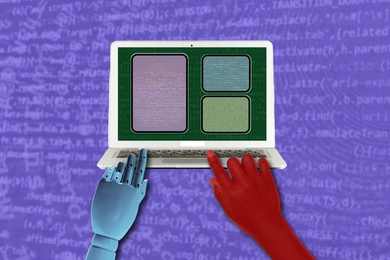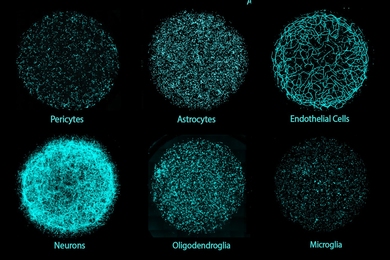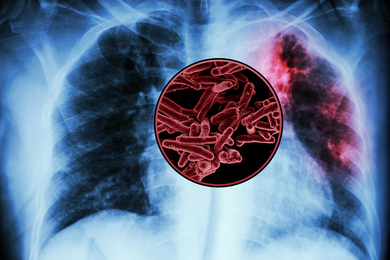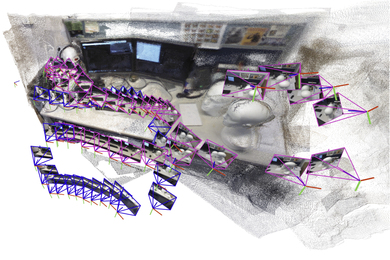A new material that naturally adapts to changing environments was inspired by the strength, stability, and mechanical performance of the jaw of a marine worm. The protein material, which was designed and modeled by researchers from the Laboratory for Atomistic and Molecular Mechanics (LAMM) in the Department of Civil and Environmental Engineering (CEE), and synthesized in collaboration with the Air Force Research Lab (AFRL) at Wright-Patterson Air Force Base, Ohio, expands and contracts based on changing pH levels and ion concentrations. It was developed by studying how the jaw of Nereis virens, a sand worm, forms and adapts in different environments.
The resulting pH- and ion-sensitive material is able to respond and react to its environment. Understanding this naturally-occurring process can be particularly helpful for active control of the motion or deformation of actuators for soft robotics and sensors without using external power supply or complex electronic controlling devices. It could also be used to build autonomous structures.
“The ability of dramatically altering the material properties, by changing its hierarchical structure starting at the chemical level, offers exciting new opportunities to tune the material, and to build upon the natural material design towards new engineering applications,” wrote Markus J. Buehler, the McAfee Professor of Engineering, head of CEE, and senior author of the paper.
The research, recently published in ACS Nano, shows that depending on the ions and pH levels in the environment, the protein material expands and contracts into different geometric patterns. When the conditions change again, the material reverts back to its original shape. This makes it particularly useful for smart composite materials with tunable mechanics and self-powered roboticists that use pH value and ion condition to change the material stiffness or generate functional deformations.
Finding inspiration in the strong, stable jaw of a marine worm
In order to create bio-inspired materials that can be used for soft robotics, sensors, and other uses — such as that inspired by the Nereis — engineers and scientists at LAMM and AFRL needed to first understand how these materials form in the Nereis worm, and how they ultimately behave in various environments. This understanding involved the development of a model that encompasses all different length scales from the atomic level, and is able to predict the material behavior. This model helps to fully understand the Nereis worm and its exceptional strength.
“Working with AFRL gave us the opportunity to pair our atomistic simulations with experiments,” said CEE research scientist Francisco Martin-Martinez. AFRL experimentally synthesized a hydrogel, a gel-like material made mostly of water, which is composed of recombinant Nvjp-1 protein responsible for the structural stability and impressive mechanical performance of the Nereis jaw. The hydrogel was used to test how the protein shrinks and changes behavior based on pH and ions in the environment.
The Nereis jaw is mostly made of organic matter, meaning it is a soft protein material with a consistency similar to gelatin. In spite of this, its strength, which has been reported to have a hardness ranging between 0.4 and 0.8 gigapascals (GPa), is similar to that of harder materials like human dentin. “It’s quite remarkable that this soft protein material, with a consistency akin to Jell-O, can be as strong as calcified minerals that are found in human dentin and harder materials such as bones,” Buehler said.
At MIT, the researchers looked at the makeup of the Nereis jaw on a molecular scale to see what makes the jaw so strong and adaptive. At this scale, the metal-coordinated crosslinks, the presence of metal in its molecular structure, provide a molecular network that makes the material stronger and at the same time make the molecular bond more dynamic, and ultimately able to respond to changing conditions. At the macroscopic scale, these dynamic metal-protein bonds result in an expansion/contraction behavior.
Combining the protein structural studies from AFRL with the molecular understanding from LAMM, Buehler, Martin-Martinez, CEE Research Scientist Zhao Qin, and former PhD student Chia-Ching Chou ’15, created a multiscale model that is able to predict the mechanical behavior of materials that contain this protein in various environments. “These atomistic simulations help us to visualize the atomic arrangements and molecular conformations that underlay the mechanical performance of these materials,” Martin-Martinez said.
Specifically, using this model the research team was able to design, test, and visualize how different molecular networks change and adapt to various pH levels, taking into account the biological and mechanical properties.
By looking at the molecular and biological makeup of a the Nereis virens and using the predictive model of the mechanical behavior of the resulting protein material, the LAMM researchers were able to more fully understand the protein material at different scales and provide a comprehensive understanding of how such protein materials form and behave in differing pH settings. This understanding guides new material designs for soft robots and sensors.
Identifying the link between environmental properties and movement in the material
The predictive model explained how the pH sensitive materials change shape and behavior, which the researchers used for designing new PH-changing geometric structures. Depending on the original geometric shape tested in the protein material and the properties surrounding it, the LAMM researchers found that the material either spirals or takes a Cypraea shell-like shape when the pH levels are changed. These are only some examples of the potential that this new material could have for developing soft robots, sensors, and autonomous structures.
Using the predictive model, the research team found that the material not only changes form, but it also reverts back to its original shape when the pH levels change. At the molecular level, histidine amino acids present in the protein bind strongly to the ions in the environment. This very local chemical reaction between amino acids and metal ions has an effect in the overall conformation of the protein at a larger scale. When environmental conditions change, the histidine-metal interactions change accordingly, which affect the protein conformation and in turn the material response.
“Changing the pH or changing the ions is like flipping a switch. You switch it on or off, depending on what environment you select, and the hydrogel expands or contracts” said Martin-Martinez.
LAMM found that at the molecular level, the structure of the protein material is strengthened when the environment contains zinc ions and certain pH levels. This creates more stable metal-coordinated crosslinks in the material’s molecular structure, which makes the molecules more dynamic and flexible.
This insight into the material’s design and its flexibility is extremely useful for environments with changing pH levels. Its response of changing its figure to changing acidity levels could be used for soft robotics. “Most soft robotics require power supply to drive the motion and to be controlled by complex electronic devices. Our work toward designing of multifunctional material may provide another pathway to directly control the material property and deformation without electronic devices,” said Qin.
By studying and modeling the molecular makeup and the behavior of the primary protein responsible for the mechanical properties ideal for Nereis jaw performance, the LAMM researchers are able to link environmental properties to movement in the material and have a more comprehensive understanding of the strength of the Nereis jaw.
The research was funded by the Air Force Office of Scientific Research and the National Science Foundation’s Extreme Science and Engineering Discovery Environment (XSEDE) for the simulations.







